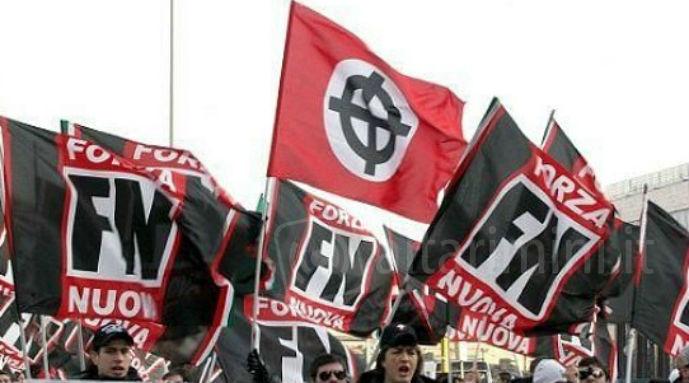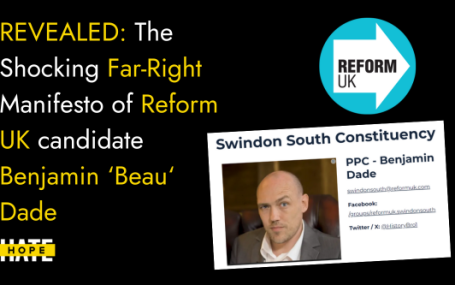HOPE not hate uses cookies to collect information and give you a more personalised experience on our site. You can find more information in our privacy policy. To agree to this, please click accept.
The current political establishment and generational concerns pose a real risk of the Italian extreme far right to further spread their hate.
In Italy, neo-fascist, neo-nazi and far-right groups – such as Forza Nuova, CasaPound, and Lealtà Azione – aim to provide representation to chunks of society abandoned by other political forces, including significant shares of the newest generation. The issues they campaign on are the social issues which are of bigger concern to the young. Their efforts on the ground are directed to working-class areas where there has been a failure of the traditional left, where the decline in schools and educational infrastructure, for example, is more apparent. They also engage in modern styles of communication and have infiltrated online spaces and music subcultures, the latter being increasingly used to make inroads into the younger generations.
It would be a serious mistake to take comfort in the poor election results achieved by the far right in the 2018 Italian general election; broader existing opportunities, spaces for the far right, trends in their favour and their projects must be taken into proper account. Moreover, there were a few peaks in the election for them. In the Lazio region, CasaPound made it past 3% of the vote in three key towns, achieved 1.86% in the province of Rome – that is over 40,000 votes. The same can be said for a number of local elections in 2017, where CasaPound – far more effective than Forza Nuova in the polls – gained a resounding 8% in Lucca and 5% in Todi.
Far-right groups and parties in Italy today share a number of common concepts. This includes the rejection of a multicultural, multi-ethnic society, in favour of the idea of “community” defined along ethnic lines (often tied to traditional far-right ideas of “blood and soil”). At an organisational level, what is also crucial to the concept of community here is the great importance the Italian far right place on the creation of offshoot organizations from core parties or activist groups, be they involved in animal welfare, mountaineering, sports, women’s issues, food banks and much else. This model or organising is designed to enhance the core group’s outreach, particularly among the young, by exploiting concerns about social or cultural issues. The hostile worldview underpinning these efforts of “community” building extends beyond ethnicity, as is clear in the Italian far-right’s moralising about society more generally. In the public sphere this can be seen in their talk of parties’ and politicians’ corruption and, in the private sphere, for example, in their railing against homosexual “degeneracy”, “unnatural” civil unions and the “gender ideology” of LGBT+ movements more broadly.

Similarly, as attacks on these groups, immigrants are often spoken of in relation to paranoid conspiracy theories that argue the real powers that be ruling the world are concealed and operate a well-planned scheme, devised by a restricted group of people, to bring in masses of people to the West. In recent years, the Italian and European far right in general has developed a strong interest in what is considered a specific plot, the ‘Kalergi plan’. This idea marks a sort of evolution of the traditional Protocols of the Elders of Zion-type antisemitic conspiracy theory. The Kalergi plan is an increasingly popular strain of the white genocide conspiracy theory, which alleges that there is a deliberate plan to undermine European white society by a campaign of mass immigration, integration and miscegenation conducted by (often argued by the far right to be Jewish) elites. The work of Austrian politician and author Richard von Coudenhove-Kalergi (1894–1972), which was inspired by totally different intentions, was distorted to present it as a “plan” that would explain immigration as a conspiracy, for example, by Austrian neo-nazi Holocaust denier Gerd Honsik in a 2005 publication.
The overarching analysis offered by the Italian far right today can be put thus: The ruling elites are controlled by the left, that wish to impose a globalised world. Hence, the need to stand up for the “white poor”, which is being made the target of “class hate”. The Italian far right believe they have a right to “stand by the people”, and represent the working class and those who have been left behind in society.
Importantly, its response is to pose as a revolutionary force, standing by the young and the (solely, in their concern, white) lower strata of society, and are thus distinctly anti-establishment, anti-capitalist and anti-imperialist, against the financial elites, and the powers that be. The current government in Rome is seen by the Italian neo-fascist, neo-nazi and extreme far right as an opportunity to penetrate political circles and institutions that have traditionally been off-limits for them. In the words of the leader of Forza Nuova, Roberto Fiore: “What the Lega and – in part – the 5 Star Movement stand for is our programme. They, however, are not wearing a black shirt”.
This is a guest post by the Osservatorio Democratico Sulle Nuove Destre.
You can follow their work here:
https://www.facebook.com/Osservatorio-democratico-sulle-nuove-destre-Italia-297778340809885/

A Reform Party candidate fantasised about deporting “millions” of British citizens to “rid itself of the foreign plague we have been diseased with”. UPDATE: Reform…